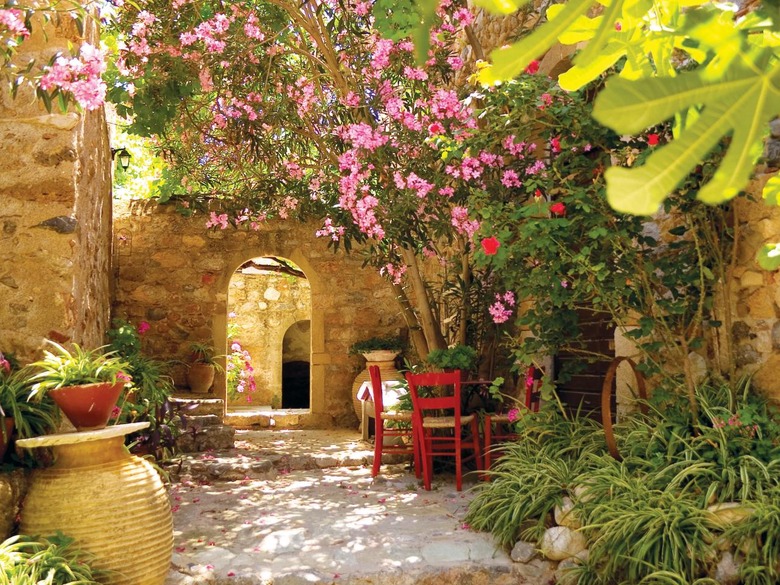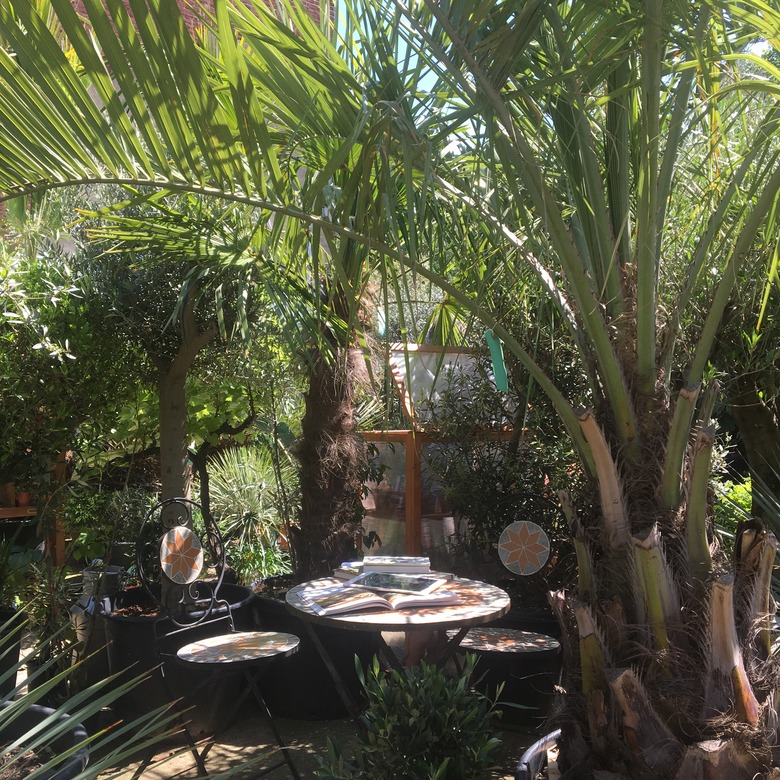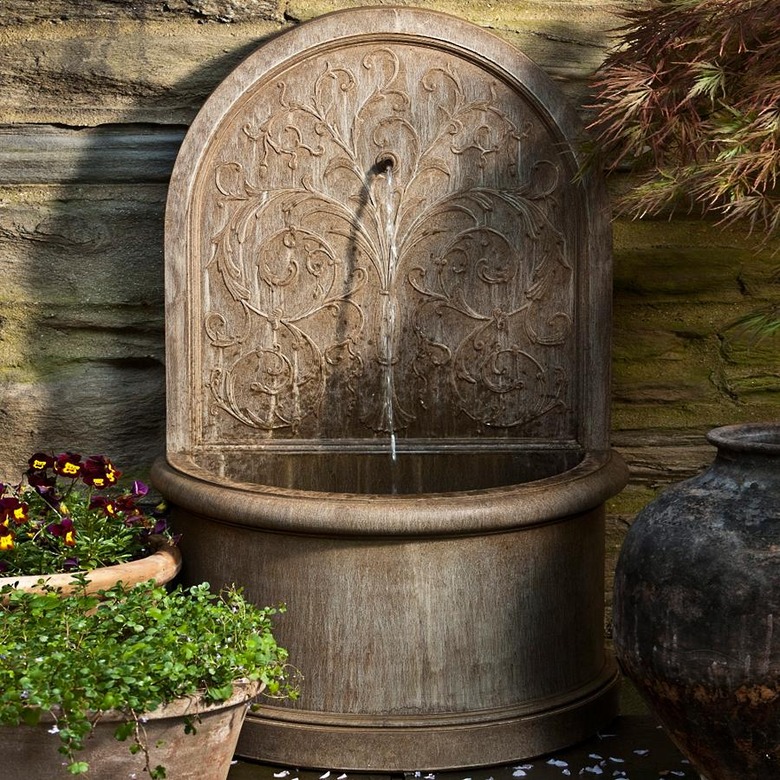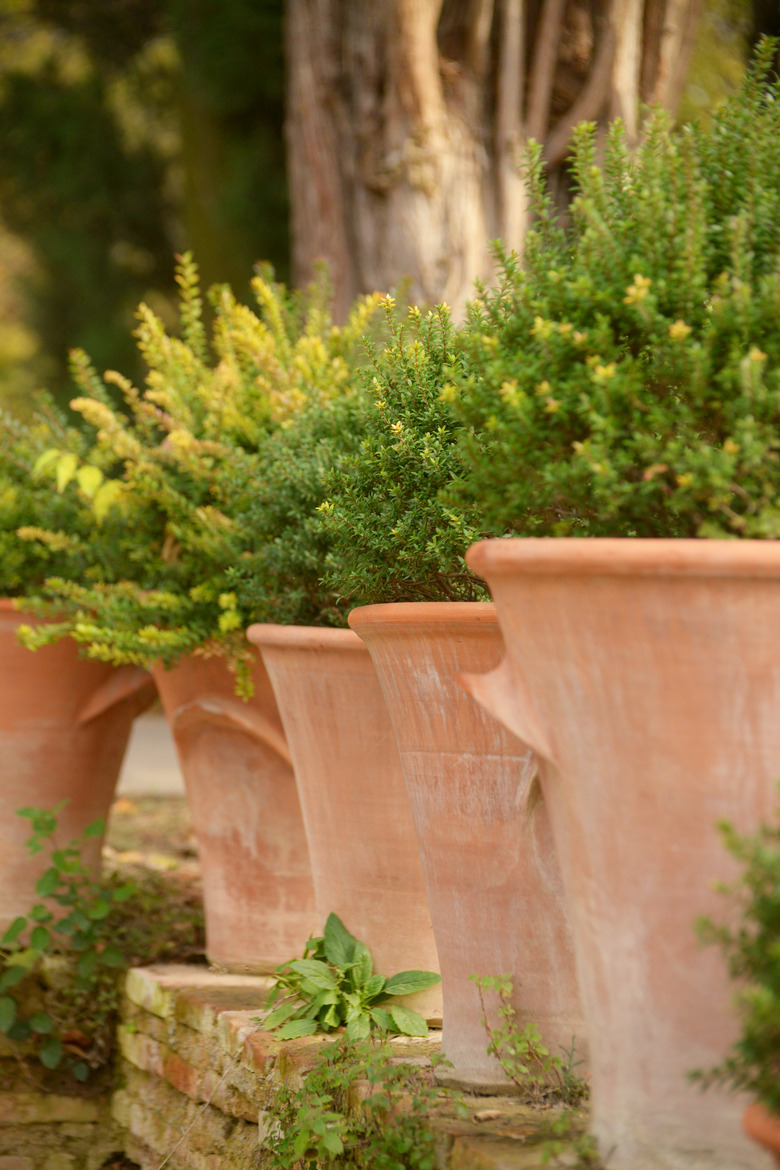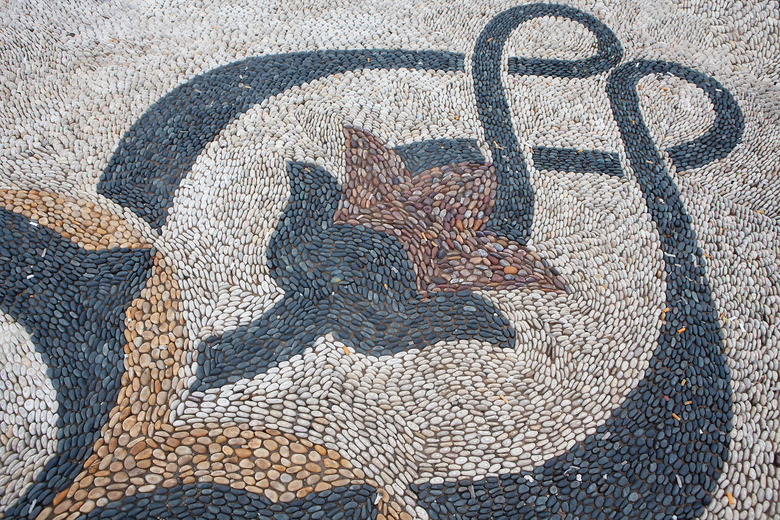Tips For Designing A Mediterranean Garden
The essence of a Mediterranean garden is that it's meant to be an outdoor living space, which is why they are quite common in warmer climates. In this garden style, inviting comfort and rustic informality take precedence over formal, ordered arrangements. No matter the size of the garden, the atmosphere is roomy and open. As an outdoor living space, a Mediterranean garden plan should allow for choice spots to relax, as well as a table and chairs for morning coffee in the garden or an alfresco supper when the weather is prime. If you happen to live in a Mediterranean climate, you have the option of planting your garden with classic Mediterranean plant varieties but because so much of what defines Mediterranean style lies in the hardscaping—the structures and paving and accessories—a Mediterranean style garden can also be successful and a natural fit in more temperate climates.
Mediterranean Gardens Are Low Maintenance
Mediterranean Gardens Are Low Maintenance
Characteristically, Mediterranean gardens are undemanding and use water frugally. Low water usage and drought tolerance make good sense for climates where water availability is limited, but it is also becoming more important in places that have not previously worried about water supplies. Of course, the choice of plantings plays a role in the Mediterranean garden's water demands, but so also does the garden's usual use of gravel and paving in place of a water-thirsty lawn. In keeping with the Mediterranean garden's predominant atmosphere of warmth and invitation, the gravel and paving stone you choose should be in warm earth tones rather than gray or blue-gray. While gravel offers the advantages of economy and low maintenance, it lacks distinction. If you use gravel in your garden plan, consider creating areas of interest by the addition of paving stones, glazed Mediterranean tiles, or a decorative mosaic.
Mediterranean Gardens Are Cooling
Mediterranean Gardens Are Cooling
To shelter the dining area from the too-hot midday sun and to offer intimate and aromatic semi-privacy, the dining table in a typical Mediterranean garden is set under a pergola which supports fragrant climbing foliage—roses, perhaps, or grapes or jasmine. Keep fragrance in mind, not only as you choose plants for a pergola, but also for your other plantings. The garden is meant to engage all the senses, and fragrance is important as color.
The idea that Mediterranean gardens use water sparingly in no way suggests that they should feel parched. The cool musical notes of a splashing fountain are in keeping with the enfolding sensory experience these gardens seek. A basin fountain set against a rough plaster or rustic stone wall is classic Mediterranean, but a freestanding fountain or bubbling water feature will do, as well.
Terra Cotta Pots Add Interest and Variety to the Garden
Terra Cotta Pots Add Interest and Variety to the Garden
Terra cotta pots—plenty of them, in a variety of sizes and shapes and planted with bright flowers and fragrant herbs—are a staple of Mediterranean gardens. Cluster them to add interest and texture where needed. Terra cotta is porous, and that porosity encourages evaporation. This helps to keep plants cool in the heat of summer, but it also causes the soil to dry out more quickly, so plants need to be watered attentively. Used sparingly, brightly glazed ceramic pots, especially ones that echo the colors of Mediterranean tile or mosaics used elsewhere in the garden, can be added to great effect.
Giving Your Mediterranean Garden Personality
Giving Your Mediterranean Garden Personality
Your garden's character will be determined by your personal taste and by the materials you have available. While characteristic travertine confers an air of instant antiquity, your local stone and pavers in warm golds and browns will be more readily available and perfectly satisfactory. A Mediterranean garden should not feel crisp and brand new. It should feel comfortably broken in and established. You can reinforce that, and the garden's Mediterranean roots, with the structures and embellishments you choose. Weathered wood in benches, trellises and gates, a repurposed rustic door, perhaps, will all contribute to your garden's ambiance, as does patinaed metal, classical statuary and the aforementioned fountains.
Planting for Your Climate
Planting for Your Climate
When choosing the plantings for your Mediterranean garden, much will depend on your growing region. Use climbing plants to maximize vertical opportunities. Favor drought-tolerant and fragrant varieties with strong-colored blooms that hold up well in bright sunlight. Aim for a pleasing combination of ornamental trees or shrubs, grasses, succulents, clipped hedges, herbs, and vines, all with an eye toward low maintenance.
If your climate approximates a Mediterranean one, you have the options of choosing "authentic" varieties for your garden—a centerpiece tree of olive, lemon or fig or a screen of iconic Italian cypresses. Other plants suitable for a warm, dry climate include:
- Lavender (Lavendula spp.)
- Rosemary (__Rosmarinus officinalis)
- Bay Laurel (Lauris nobilis)
- Agave (Agave spp.)
- Wormwood (Artemisia)
- Mediterranean Spurge (Euphorbia characias)
- Lamb's Ears (Stachys byzantina)
- Rock Rose (Cistus)
If you garden in a cooler, wetter climate your plant choices will need to be adjusted accordingly but plenty of options are available, such as:
- Lavender (Lavendula spp.)
- Rosemary (__Rosmarinus officinalis) (you'll need to bring it inside for the winter)
- Globe Thistle (Echinops ritro)
- Rusty Foxglove (Digitalis ferrugina)
- Rock Cress (Aubrieta deltoidea)
- Golden Marguerite (Anthemis tinctoria)
- Red Valerian (Centranthus ruber)
- Cranesbill Geranium (Geranium spp.)
- Bachelor's Button (Centaurea Montana)
- Golden Marguerite (Anthemis tinctoria)
- Lamb's Ears (Stachys byzantia)
As with any garden anywhere, it's a good idea to seek the advice of your local garden center regarding which plants and which cultivars will thrive in your area. Mediterranean gardens, ultimately, are less a checklist of specific plants and more an attitude and a lifestyle.
